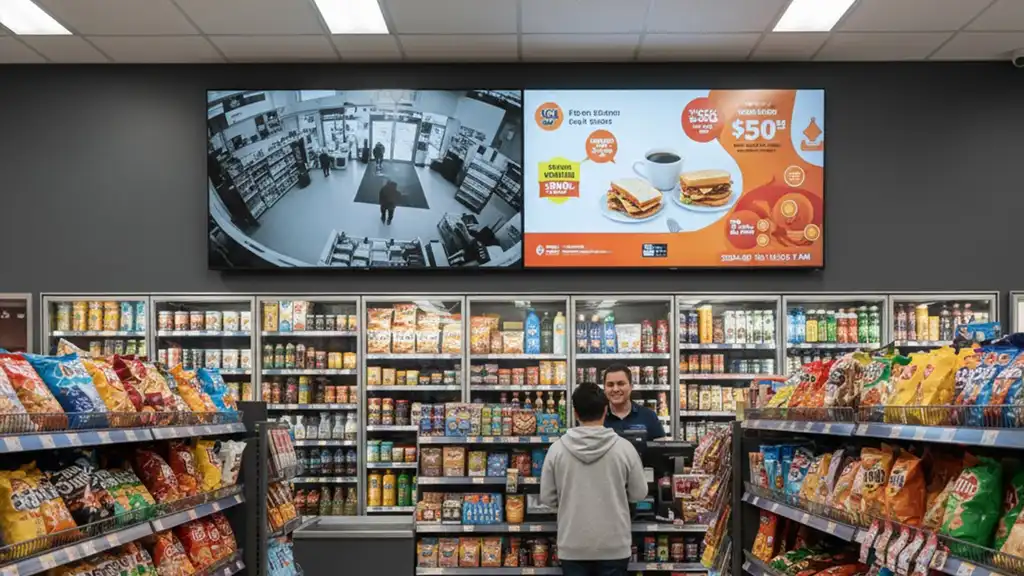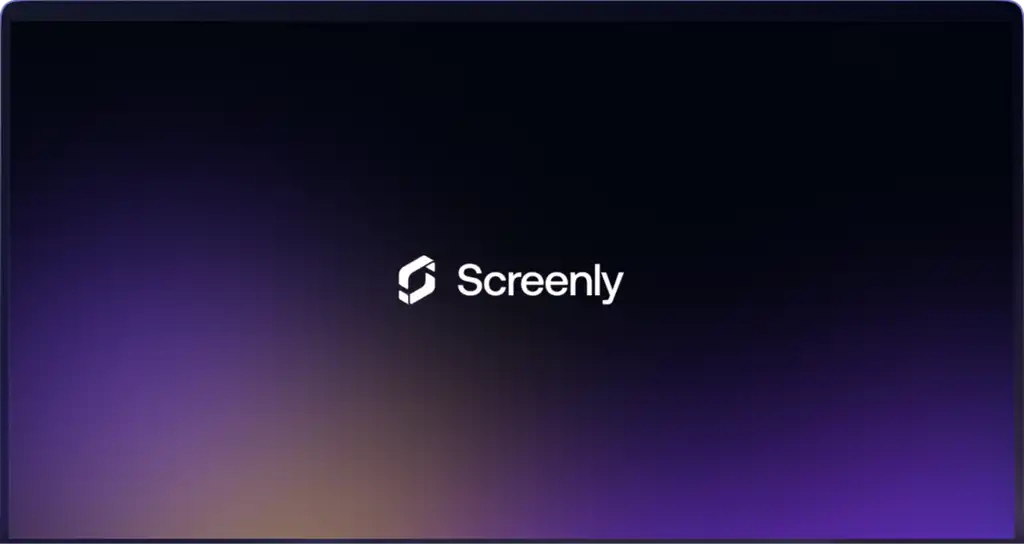Digital signage has never been easier for a small business. The best part is, setting up a digital signage strategy doesn’t have to be complicated or costly. With modern cloud-based tools (like Screenly), you can update your screen content remotely from anywhere with an internet connection and start reaching your audience with just a single display. In the post below, we share a simple 5-step plan for getting started with digital signs and crafting your own digital signage strategy.
1. Pick one goal for your digital signs
Start by choosing one main goal for your digital sign. Having a clear focus will keep your content on point and effective. Maybe you want to increase sales of a certain product, promote a daily special, share internal perfomance metrics, or announce an upcoming event – it all depends on your business (retail store, restaurant, school, etc.). Pick one objective that matters most, and let that goal guide all your content decisions. By zeroing in on a single goal, you can create a targeted message and more easily measure its success.
2. Choose the best screen location
Next, decide where to put your screen so it gets noticed. Location is key in any digital signage strategy. Think about where your target viewers spend time or pass by:
Retail store: Place your digital sign near the entrance or checkout, where shoppers can’t miss it.
Restaurant: Mount your screen by the menu board or counter, where customers are deciding what to order.
School: Put your display in the main check-in area or a busy hallway, where parents and students will see updates in their daily routine.
Wherever you place it, make sure the screen is easy to spot (eye-level, unobstructed, and in a well-lit area). Make the screen part of the natural flow of your space so people naturally glance at it. Digital signs are flexible – if one spot isn’t working well, you can always move the screen or add a second one elsewhere.
3. Load 3 to 5 content slides to get started
With your goal and location set, it’s now time to create content. We recommend starting with just 3 to 5 slides in rotation. That’s enough to provide some variety without overwhelming your viewers (or whoever is creating the content!). Focus on content that supports your one goal. For example, if you’re promoting a new product, you could show a bold image of the product with a catchy headline on one slide, then highlight a special offer or price on the next. A third slide might include a short testimonial or a clear call-to-action.
Each slide should be simple, eye-catching, and readable at a glance. Use bright images or graphics and concise text. You don’t need dozens of slides or complicated animations to start – a few clear messages will do the job. If you’re using a digital signage management platform, like Screenly, just upload your content to its cloud dashboard, and it will handle the looping and scheduling for you.
4. Track one metric
Once your digital sign is up and running, keep an eye on one key metric that ties back to your goal. This will tell you if your strategy is working. For a sales goal, look at that product’s sales; if you promoted an event, check how many people signed up; for an internal message, maybe use a quick survey to see if employees noticed the announcement.
Sticking to one metric makes it simple to measure success. For example, some businesses use a promo code exclusively shown on the digital sign and then count how often that code is used – a clear indicator that viewers acted on the content. You can also display QR codes with UTM parameters and associated tracking software. Give it some time and then check the results. If the numbers move in the right direction, great – if not, you can adjust and try again.
5. Tweak and grow your digital signage footprint
Digital signage isn’t a set-and-forget tactic. After a while, look at your results and make tweaks to improve. Did you reach your goal, or do you need to change something? Use the data to refine your approach. If the content isn’t getting results, try a clearer message or more eye-catching visuals (or adjust the timing). If the screen isn’t being noticed, reposition it for better visibility. If your sign did accomplish its goal, you can build on that success – perhaps set a new goal, or add another screen in a new location to reach even more people.
The beauty of digital signage is that it is easy to scale up. You can go from one screen to multiple screens without a lot of extra effort, especially if you’re using a cloud management platform. Screenly lets you manage a single display or a whole fleet of screens across locations from one online dashboard. As you add more screens or goals, continue to track metrics and iterate. Over time, you’ll discover what content works best for your audience and can build on that success.
Bring your strategy to life with Screenly
Following these five steps will help you build a simple but effective digital signage strategy, and having the right tool to manage your screens makes everything easier. Screenly offers an all-in-one digital signage platform that’s easy to use, cloud-based, and flexible enough to run on just about any screen you have.
Screenly is designed to be accessible and affordable for small businesses, so you won’t need a big budget or technical team to get started. In fact, you don’t need additional digital signage player hardware. You can launch your digital signs using existing screens via our Screenly Anywhere feature and Screenly Android App.
Ready to get started? You can try Screenly free for 30 days and see how simple digital signage can be. Sign up for your 14-day free trial and start engaging your audience with your own digital sign!





